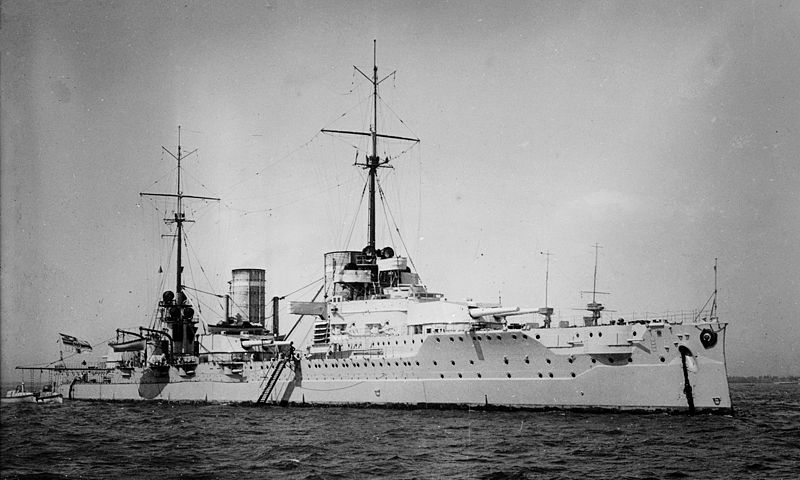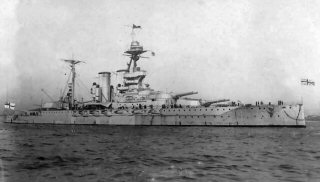|
|
|
|
|
|
|
BATTAGLIA NAVALE DELLO JUTLAND
NAVAL BATTLE OF JUTLAND
|
|
|
|
|
|
|
31 MAGGIO 1916 - 1° GIUGNO 1916


STORIA / HISTORY
L'INSEGUIMENTO DI HIPPER /
Alle 16.10 giungevano sulla squadra di Hipper le prime granate delle 4 corazzate britanniche delle classe Queen Elizabeth, tornate indietro in soccorso degli incrociatori. Se il loro ritorno fosse stato più sollecito, difficilmente la squadra di Hipper sarebbe sfuggita al fuoco micidiale dei 381 britannici; invece, sparando da ben 16 chilometri di distanza il fuoco delle corazzate inglesi non fu molto preciso.
Alle 16.35 l'ammiraglio Beatty avvistava la lunga linea delle corazzate di von Scheer che giungevano sul luogo del combattimento. Immediatamente Beatty ordinava alle sue navi di invertire la rotta e di dirigersi verso il grosso della Grand Fleet.
Hipper, sentendosi ormai sicuro, avendo di poppa le grosse navi di von Scheer, lo seguì puntando verso nord. Da ambedue le parti si continuava a sparare ed anche le corazzate tedesche della classe Koenig erano entrate in azione. Ma, avvicinandosi il momento del tramonto, gli inglesi erano favoriti nelle operazioni di puntamento, avendo il sole alle spalle mentre i tedeschi lo avevano contro. Il Kurfuerst, il Markgraf ed il Koenig vennero ripetutamente colpiti, ma l'eccellente corazzatura li protesse da ogni serio danno sia alle artiglierie che alle macchine.
Beatty con una mossa imprevista, proprio al momento dell'arrivo delle navi di Scheer, rovesciò la situazione virando velocemente verso nord, disponendo la Grand Fleet al completo a forma di enorme arco bloccando lo Skegerrak.
Il mare era agitato e benché il cielo fosse ancora chiaro un velo di foschia riduceva la visibilità; Scheer era convinto di poter finalmente realizzare il desiderio di affrontare una parte della Grand Fleet prima del calare dell'oscurità vincendola in un rapido scontro.
Questa convinzione era rafforzata dalla convinzione di essere in vantaggio numerico, e proprio per questo rimase ancora più sorpreso quando si rese conto di aver davanti tutta la flotta britannica; Scheer si trovò in trappola e iniziò la seconda fase della battaglia.
At 16.10 o'clock they came on the team of Hipper the first brooms of the 4 British battleships of the class Queen Elizabeth, you return back in help of the cruisers. If their return had been more prompt, the team of Hipper would hardly be escaped the deadly fire of the 381 British; instead, shooting from well 16 kilometers of distance the fire of the battleships English it was not very precise.
At 16.35 o'clock the admiral Beatty sighted the long line of the battleships of von Scheer that came on the place of the fight. Beatty immediately ordered to his/her ships to reverse the rout and to go themselves toward the big one of the Grand Fleet.
Hipper, feeling himself by now sure, having of stern the big ships of von Scheer, it followed him/it aiming toward north. From both the parts he kept on shooting and also the German battleships of the class Koenig had entered action. But, the moment of the sunset approaching himself, the English were favorite in the operations of aim, having the sun to the shoulders while the Germans had it against.
The Kurfuerst, the Markgraf and the Koenig repeatedly came stricken, but the excellent corazzatura them protesse from every serious damage both to the artilleries that to the cars.
LE PIU' GRANDI BATTAGLIE NAVALI (NAVAL BATTLES)
BATTAGLIA NAVALE DELLO JUTLAND / JUTLAND NAVAL BATTLE
PORTAEREI NELLA STORIA (AIRCRAFT CARRIERS)
NAVI DA GUERRA (WARSHIPS AND BATTLESHIPS)